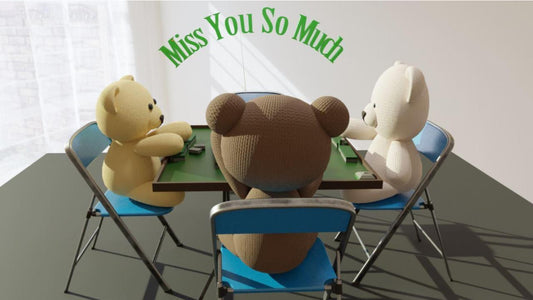Mahjong for the Dead
Seeing the fire and worships on street, I know it is now the month of the ghosts when ghosts are free to visit the living world before the hell and heaven realm closes on the 15th of July in the lunar calendar, a day which is celebrated as the Hungry Ghost Festival or commonly known as the Yu Lan Festival in Hong Kong.
As mentioned in an earlier episode, many festivals are very glocal. This hungry ghost festival is a joint festival in Buddhism, Yulanpen Festival (盂蘭盆節) and in Taoism, the Zhongyuan Festival (中元節). It is celebrated in many eastern countries like India, China, Japan, Korea, Thailand and Vietnam with different rituals. In Hong Kong, the Yu Lan festival is most celebrated by the Chao Zhou people with bamboo pop-up stage and performance. People also burn incense and joss money on street as offerings to ghosts who are left unattended by their descendants, an Asian tradition that shows their care to other people, even if they are strangers and deceased. In other places, it could include releasing miniature paper boats and lanterns on water, which are meant to symbolically guide the lost souls of forgotten ancestors to their afterlife.||
Apart from this festival, implanted with strong Confuscism traditions, the Chinese take ancestral veneration seriously and worship their ancestors regularly by sweeping the tombs or in modern day, cleaning the ancestral places during the Double Nine and Ching Ming Festival. They make offerings to the dearly departed through burning joss sticks, paper folded into the shape of traditional gold ingot, joss banknotes, and sometimes paper replicas of gold, daily necessities and even luxury items hoping to provide them all they need to have good afterlives and avoid being bullied by others. It is part of the ritual in Taoist funeral to burn much larger items like joss villas, cars or even servants.
Tracing the origin of these traditions, the belief in an afterlife, offering to the deceased, expelling the evil and making wishes through the vehicle of fire are common to many religions. Others believe that these could be replacements for the inhuman practice of burying living beings and people, and the extravagance of real things in tombs when kings and nobles died to continue their affluent lives after death. ||
These joss model items are sold in specialized shops which change their merchandise throughout the year according to different seasons and festivals. The joss collections also reflect the lifestyle of people in their time. They could include daily toiletries kits, the three Cs: computer, communication and consumer electronics to home electrical appliances like televisions and washing machines. Fashion items could include famous brand handbags and shoes, clothes in traditional styles to contemporary suits, jumpers or even T-shirts.
As a beloved game by Asians, we can find joss mahjong in these traditional Chinese shops. They range from sets of mahjong tiles in different shapes and sizes to mahjong tables with chairs or even paper companions to play the game. Apart from mahjong, there are also items like full sets of different games or even pets. ||
There are also special offerings for kids like toys or school bags or for pets like houses for dogs. Apart from real food offerings, food sets or even MacDonald hamburgers are available in paper models. We may find weird items like bikinis, tea tables, motorcycles, a Dyson vacuum cleaner, ………….
As they are meant for burning, most of these joss models are very crudely made but in special shops, we may also find models that are finely done with great attention to detail, we show here some of these joss paper art.
Though it may not be the most environmental way of celebrating festivals with the burning and the smoke, it does show Asian belief in the afterlife and rich traditions in paying homage to their dearly departed and their ancestors.


